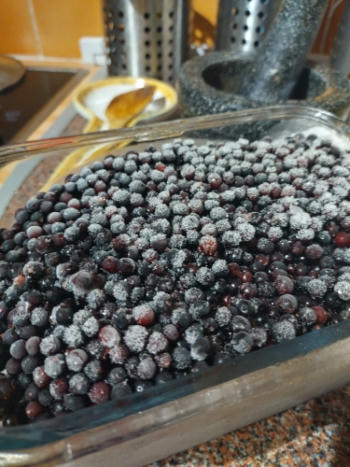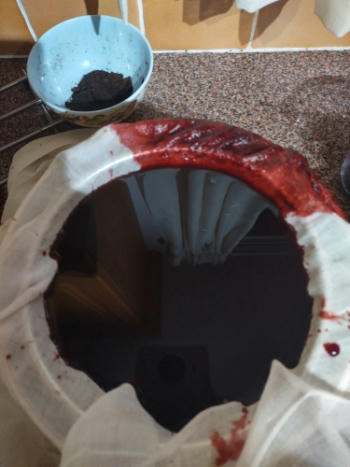Elderberry
Elder is a small tree that grows in sunny hedgerows and nearby rivers. The leaves have serrated edges, and often take on a yellow colour that makes it easy to spot the tree from a distance.
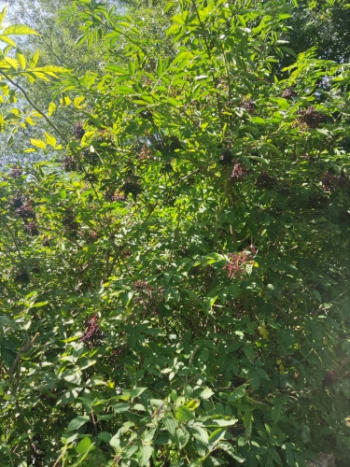
In the late summer, the trees grow bunches of berries, that turn from green, to red, to deep purple-black as they ripen. Elder trees are enthusiastic producers of fruit, and can easily burden themselves too heavily, dying back and abandoning branches to die during the growing season. Once ripe, there is often more fruit than birds can eat, and it can spoil on the tree, succumbing to mould, insects, or simply drying and shrivelling.
When ripe, an easy way to gather the berries is to hold a basket under the tree, and rub the bunches of berries. The unripe berries will generally stay attached, and the ripe ones will fall into the basket.
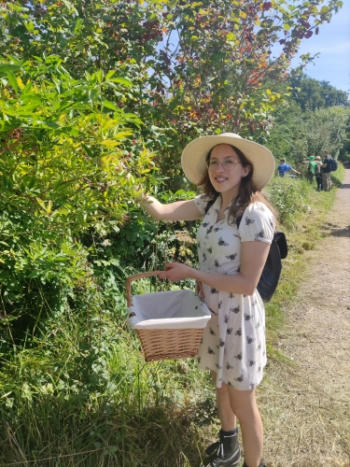
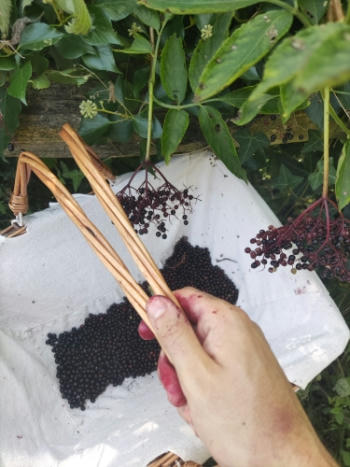
Once gathered, pour the berries into a bowl of water, and wash thoroughly. Insects enjoy elderberries, and often come along for the ride, so watch out for any, particularly snails. The unripe berries and stems should float to the top, and can be poured off, while the ripe and over-ripe elderberries will sink to the bottom. If the elderberries were gathered late in the season, the over-ripe elderberries will need to be manually removed.
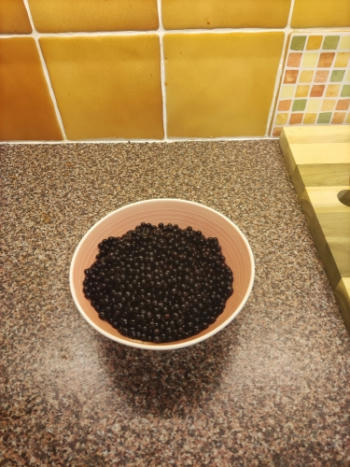
Elderberries need to be cooked before use, and can be poisonous in large quantities when raw. When cooked, they can be used for making jams or wine.
